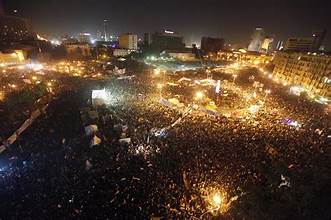The Arab Spring refers to a series of pro-democracy uprisings, protests, and demonstrations swept through the Arab world during 2010 and 2011. These uprisings led to significant political, social, and economic changes in many countries in the Middle East and North Africa (MENA) region.
Other Countries Joining the Arab Spring
Egypt: Inspired by Tunisia’s success, Egyptians began mass protests in January 2011, demanding the ouster of President Hosni Mubarak, who had ruled for nearly 30 years. After weeks of protests and international pressure, Mubarak stepped down in February 2011.
Libya: Protests against the regime of Colonel Muammar Gaddafi escalated into a civil war with the support of NATO. The conflict eventually led to Gaddafi’s downfall and death in October 2011.
Yemen: Mass demonstrations against President Ali Abdullah Saleh’s 33-year rule occurred throughout 2011. The Gulf Cooperation Council (GCC) broke down a power transition deal, eventually leading to Saleh stepping down in November 2011.
Syria: Protests against President Bashar al-Assad’s authoritarian rule erupted in March 2011. The Syrian conflict evolved into a brutal and ongoing civil war with significant international involvement, leading to a humanitarian crisis.
Arab Spring uprisings and protests also occurred in Bahrain, Jordan, Morocco, Algeria, and other countries, although the outcomes and levels of success varied.





